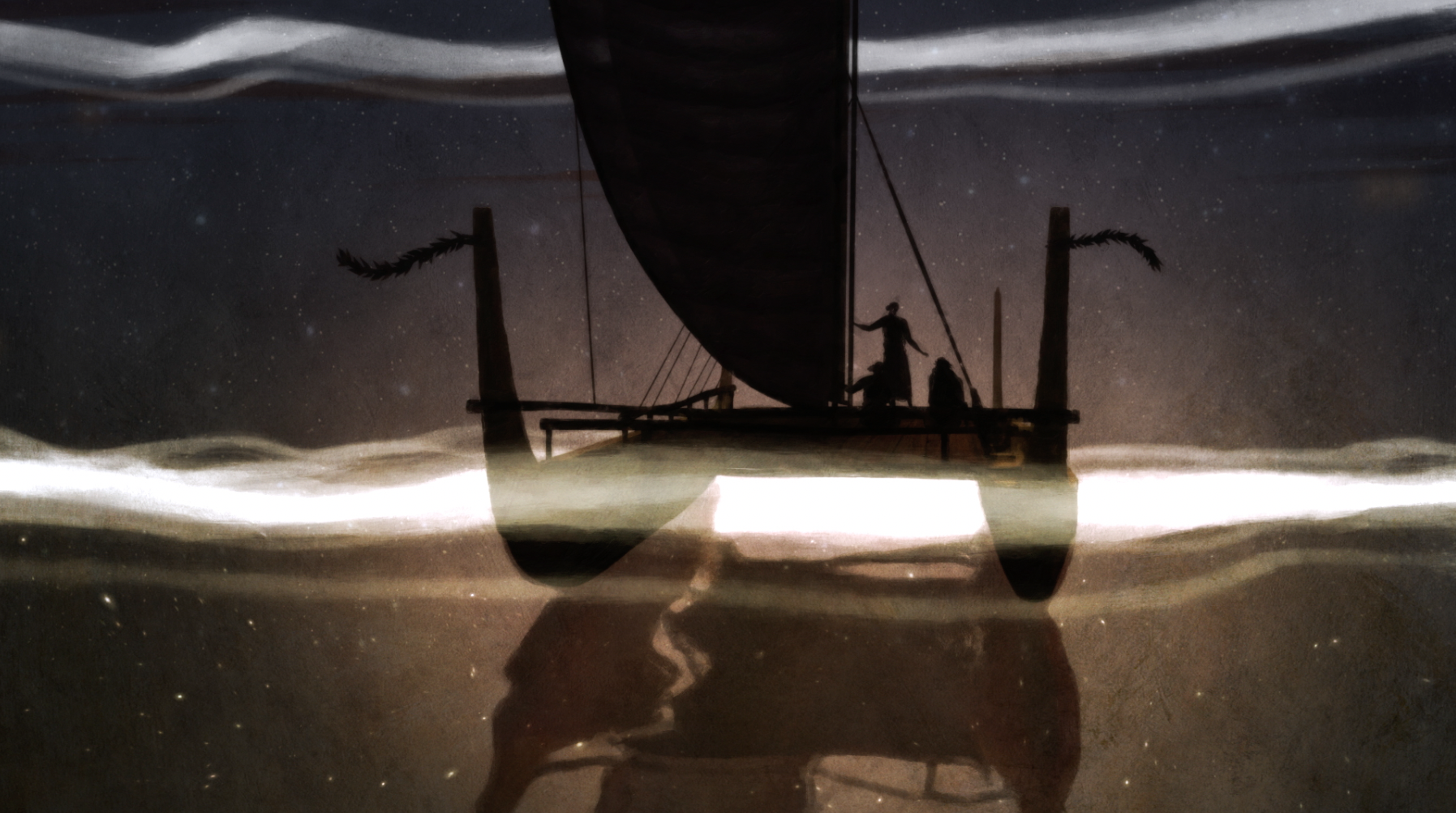
THE MOOLELO OF KAPAEMAHU
Kapaemahu is a moolelo – a story that bridges the gap between history and legend. It was passed down orally by the noble families of Waikiki and recorded in writing in 1906.
Long before the reign of King Kakuhihewa in the 1500s, four Tahitian healers traveled to Hawaii from their home Moaulanuiakea on the island of Raiatea. Their names were Kapaemahu, who was the leader of the group, Kapuni, Kinohi and Kahaloa. They settled in Waikiki in a place near here called Ulukou
The healers were mahu – extraordinary individuals of dual male and female mind, heart and spirit. They were beloved by the people for their gentle ways, and their fame spread as they traveled throughout the islands administering their miraculous cures.
When it was time to depart, they asked that two stones be placed at their residence and two at their bathing place in the sea as a permanent reminder of the relief of pain and suffering from their ministrations. Four huge stones were quarried from the vicinity of the bell rock in Kaimuki, and transported to Waikiki on the night of Kane.
The healers transferred their names and spiritual power to the stones, placing mahu idols under each one. Tradition states that the incantations, fasting and prayers lasted a full cycle of the moon. Then the healers vanished and were seen no more.
WATCH THE ANIMATED STORY
This telling of the moolelo is based on the handwritten manuscript of a story conveyed by James Aalapuna Harbottle Boyd, a colonel of the Hawaiian Kingdom and confidante of Queen Liliuokalani, to Thomas Thrum, publisher of the Hawaiian Almanac. It was published in 1907 with the Hawaiian title Ka Pohaku Kahuna Kapaemahu (The Healer Stones of Kapaemahu), and the English title “Tradition of the Wizard Stones Kapaemahu.”
The animationis narrated in Olelo Kanaka Niihau, the only form of Hawaiian uninterrupted by western contact and closest to the langauge probably spoken by the mahu healers. This page of the website uses the simple orthography that was employed in Hawaiian language literature and newspapers prior to the introduction of the diacriticals that aide students and teachers of Hawaiian as a second language.






